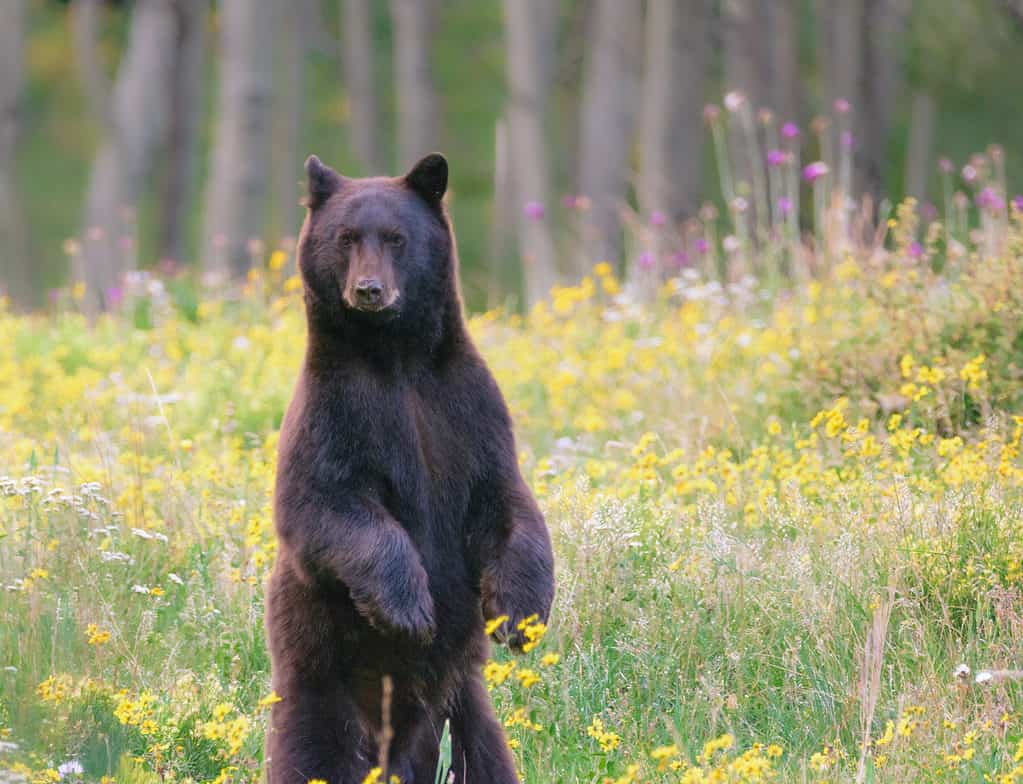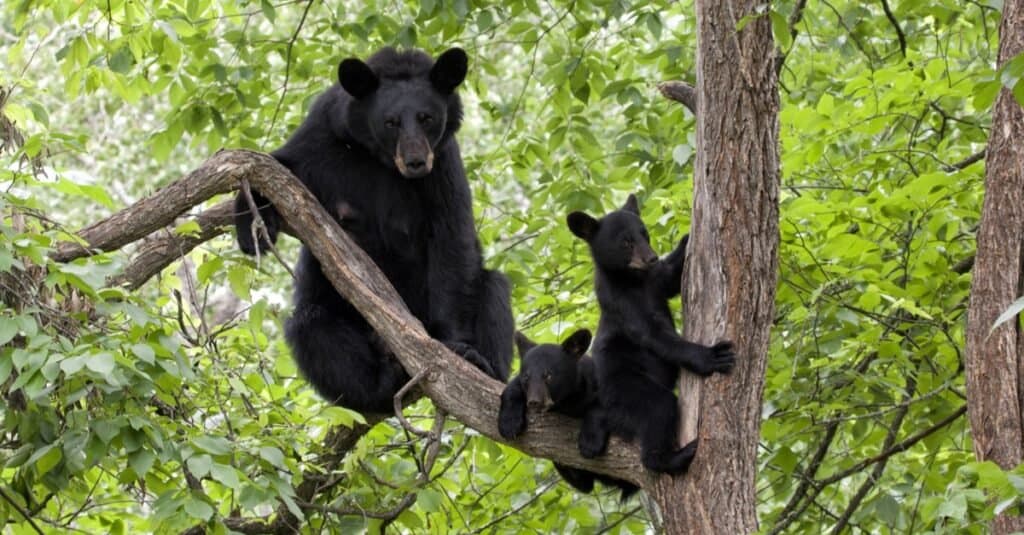California’s relationship with bears is pretty widely known, just look at the state flag! Sadly, there aren’t any of the flag’s image-sake, the brown bear, left in the state. Brown bears (grizzly bears) were killed off in California by the 1920s, but the legacy still remains. Still, there are bears that live in California, just not brown ones.
Black bears are extremely common in various parts of the state and are actually split into two subspecies: the California black bear and the Olympic black bear. Today, we are going to be taking a look at these bears in the state and discover the largest black bear ever caught in California. Let’s get started!
The Largest Black Bear Ever Caught in California

The largest black bear ever caught in California had a score of 23 3/16”.
©Constance Mahoney/Shutterstock.com
The largest black bear ever caught in California was hunted in September 1993 in Mendocino County and was taken by bow by Robert J. Shuttleworth. The bear had a score of 23 3/16”.
In many situations, the largest “caught” animals on record are often animals that have been harvested or hunted. Although it may seem unfortunate, hunting as a hobby is extremely well documented and ranked, giving us the most accurate and up-to-date information on trophy animals in any given area. It’s possible that there have been other, larger black bears in the state, but none of them has been as well documented and measured as the ones that have been hunted.
The largest black bear ever caught in California isn’t just a state record, but a national one! For nearly 30 years, the California record was held as the largest black bear ever caught in the US before the trophy animal was unseated in November 2011 by Robert T. Christian with a score of 23 9/16” in Pennsylvania. Incredibly, the 2011 record was just shy of the largest black bear ever measured, which is held by a skull that was found in Utah that measured 23 10/16”, although the living bear wasn’t actually seen.
How Trophy Scores Are Measured for Black Bears
The measurement of a black bear trophy is based on the skull. The Boone & Crockett organization, a widely recognized group that maintains records of big game animals, uses skull measurement as the standard for determining the trophy quality of a black bear since weight can fluctuate so much from season to season. If the record was taken only according to weight, it could be manipulated by only harvesting bears during the peak season of the bear’s foraging habits, skewing the whole thing.
To measure the skull, the width, and length of the skull are taken without the lower jaw. The sum of these two measurements is the score. In order to qualify for the record book, a black bear must have a skull measurement of at least 20 inches. To qualify for the all-time record book, a skull measurement of 21 inches is required.
California’s Black Bear Population
Black bears play a vital role in maintaining California’s biodiversity, and their populations have been on the rise in recent decades. Initially estimated at between 10,000 and 15,000 bears in 1982, the current estimation of California’s black bear population stands at between 30,000 and 40,000.
California is home to two different subspecies of black bears, including the California black bear and the Olympic black bear. They are usually found at elevations of 3,000 to 7,000 feet, with the California black bear typically found in the northern and central regions of the state. The geographical separation of the California black bear and the Olympic black bear is believed to be the result of the Klamath Mountains creating genetically isolated populations.
Black Bears: A Quick Overview

Black bears are adaptable animals, able to survive in various habitats, from coastal rainforests to arid deserts.
©Debbie Steinhausser/Shutterstock.com
Black bears are a widely distributed species that can be found in North America, Europe, and Asia, although they do have genetically unique subspecies through the various places they live across the world. Here’s a quick overview of black bears:
Diet
Black bears are omnivorous, eating a wide variety of foods, including berries, fruits, nuts, insects, fish, and small mammals. Black bears are so good at foraging, in fact, that places with high bear populations need to take extra steps in order to dissuade bears from rummaging through trash bins, garbage heaps, or even through homes!
Average Size
Adult black bears typically weigh around 250-300 pounds and measure around 4–6 feet in length, although this varies widely depending on the time of year, location, and region.
Distribution and Habitat
Black bears are widely distributed across North America, Europe, and Asia, and they are commonly found in forested areas and mountain ranges. They are adaptable animals, able to survive in a variety of different habitats, from coastal rainforests to arid deserts. Black bears are pretty much able to make a living anywhere they find themselves!
Conservation
The conservation of black bear populations is a concern as hunting, habitat loss, and human-wildlife conflict are major threats to their survival. Conservation efforts are being taken to ensure the protection and preservation of the black bear population, many of which have resulted in great success (with an example being California’s recovering population listed above).
The photo featured at the top of this post is © Holly Kuchera/Shutterstock.com
Thank you for reading! Have some feedback for us? Contact the AZ Animals editorial team.






